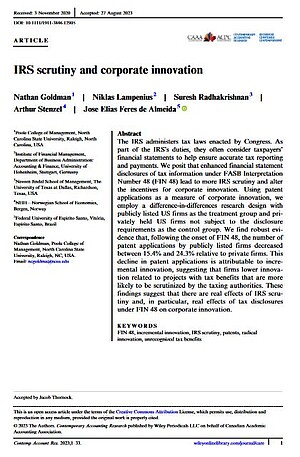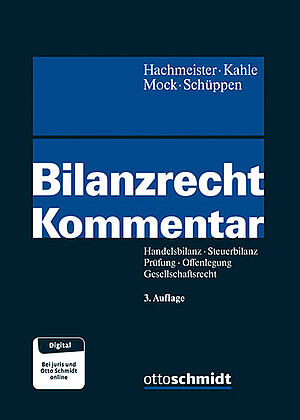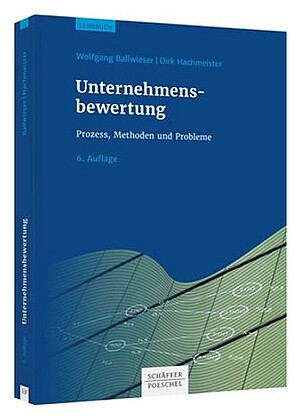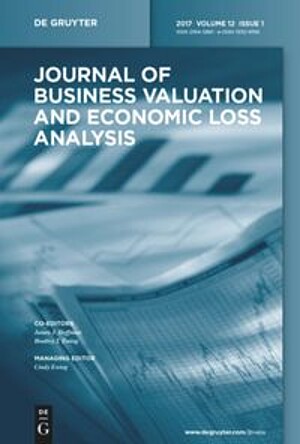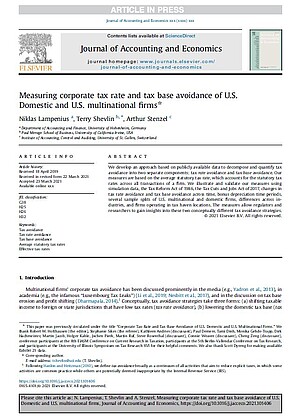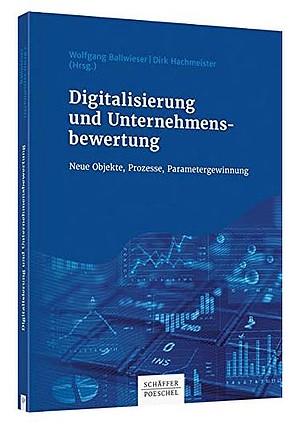IRS scrutiny and corporate innovation
New article in Contemporary Accounting Research (CAR), online since 13 September 2023ABSTRACT: The IRS administers tax laws enacted by Congress. As part of the IRS's duties, they often consider taxpayers' financial statements to help ensure accurate tax reporting and payments. We posit that enhanced financial statement disclosures of tax information under FASB Interpretation Number 48 (FIN 48) lead to more IRS scrutiny and alter the incentives for corporate innovation. Using patent applications as a measure of corporate innovation, we employ a difference-in-differences research design with publicly listed US firms as the treatment group and privately held US firms not subject to the disclosure requirements as the control group. We find robust evidence that, following the onset of FIN 48, the number of patent applications by publicly listed firms decreased between 15.4% and 24.3% relative to private firms. This decline in patent applications is attributable to incremental innovation, suggesting that firms lower innovation related to projects with tax benefits that are more likely to be scrutinized by the taxing authorities. These findings suggest that there are real effects of IRS scrutiny and, in particular, real effects of tax disclosures under FIN 48 on corporate innovation.
|
Allgemeine Betriebswirtschaftslehre - 10. Auflage
Umfassende Einführung aus managementorientierter Sicht
Autoren: Thommen, J.-P., Achleitner, A.-K., Gilbert, D.U., Hachmeister, D., Jarchow, S., Kaiser, G. Dieses bewährte Lehrbuch gibt eine umfassende und sehr gut verständliche Einführung in alle unternehmerischen Funktionen aus managementorientierter Sicht. Es ist das Standardwerk für Ausbildung und Praxis und zeigt, mit welchen Instrumenten die Strukturen und Prozesse eines Unternehmens optimal gestaltet werden können. Die klare Strukturierung des Inhalts, die vielen anschaulichen Grafiken sowie das umfangreiche Stichwortverzeichnis ermöglichen auch eine Nutzung des Lehrbuches als Nachschlagewerk. Neu in der 10. Auflage Für die 10. Auflage wurde der Lehrbuch-Bestseller erneut überarbeitet und aktualisiert. So wurden neuere Entwicklungen – sowohl in der Theorie als auch in der Praxis – in allen Teilbereichen berücksichtigt, insbesondere die Auswirkungen der zunehmenden Digitalisierung. Der Inhalt Unternehmen und Umwelt – Marketing – Supply-Management – Produktionsmanagement – Rechnungswesen – Finanzierung – Investition und Unternehmensbewertung – Personalmanagement – Organisation – Management. Die Autoren: Prof. Dr. Jean-Paul Thommen, Professor der EBS Universität für Wirtschaft und Recht, Titularprofessor an der Universität Zürich sowie Dozent an der Universität St. Gallen, Prof. Dr. Dr. Dr. h.c. Ann-Kristin Achleitner, Distinguished Affiliated Professor der TU München Prof. Dr. Dirk Ulrich Gilbert, Professor für Allgemeine Betriebswirtschaftslehre, insbesondere Unternehmensethik an der Universität Hamburg, Prof. Dr. Dirk Hachmeister, Professor für Betriebswirtschaftslehre, insbesondere Rechnungswesen und Finanzierung, Universität Hohenheim, Dr. Svenja Jarchow, Managing Director des Center for Entrepreneurial and Financial Studies (CEFS), TU München, Prof. Dr. Gernot Kaiser, Professor für Allgemeine Betriebswirtschaftslehre, insbesondere Logistik- und Beschaffungsmanagement, HS Nordhausen
| |||||||||
Bilanzrecht Kommentar - 3. Auflage
Handelsbilanz – Steuerbilanz – Prüfung – Offenlegung – Gesellschaftsrecht. Kommentar.Erfolgreiches Konzept Zentraler Bestandteil ist das Dritte Buch des HGB (§§ 238–342a HGB) mit den für die Rechnungslegung relevanten Normen. Einzigartig am Konzept ist die umfassende Kommentierung des deutschen Handelsbilanzrechts und Steuerbilanzrechts unter Berücksichtigung des relevanten Gesellschaftsrechts. Damit sind alle Aspekte der Bilanzierungspraxis rechtsübergreifend in einem Werk abgebildet. Stichwort: Wirecard Auf dem neuesten Stand Die Neuauflage reflektiert alle Rechtsänderungen, die bis zum 31.3.2022 in Kraft getreten sind, darunter diese:
Darüber hinaus behandelt das Werk weitere bilanzierungsrelevante Aspekte, so u. a.:
| |||||||||||
Allgemeine Betriebswirtschaftslehre Arbeitsbuch
Repetitionsfragen - Aufgaben - Lösungen
Autoren: Thommen, J.-P., Achleitner, A.-K., Gilbert, D.U., Hachmeister, D., Kaiser, G. Dieses umfassende Arbeitsbuch ergänzt das bewährte Lehrbuch Allgemeine Betriebswirtschaftslehre. Es deckt mit seinen zahlreichen Aufgaben und ausführlichen Lösungen alle im Lehrbuch behandelten Gebiete der Betriebswirtschaftslehre ab. Damit dient es der Anwendung und Vertiefung betriebswirtschaftlicher Theorien, Modelle und Instrumente. Das Arbeitsbuch eignet sich sowohl für den Unterricht wie auch für das Selbststudium. Für die 9. Auflage wurde das Arbeitsbuch überarbeitet und aktualisiert. Damit wurde das Arbeitsbuch wiederum an die aktuelle Auflage des Lehrbuchs Allgemeine Betriebswirtschaftslehre angepasst. Die Autoren Prof. Dr. Jean-Paul Thommen, Professor der EBS Universität für Wirtschaft und Recht, Titularprofessor an der Universität Zürich sowie Dozent an der Universität St. Gallen Prof. Dr. Dr. Dr. h.c. Ann-Kristin Achleitner, Distinguished Affiliated Professor der TU München Prof. Dr. Dirk Ulrich Gilbert, Professor für Allgemeine Betriebswirtschaftslehre, insbesondere Unternehmensethik an der Universität Hamburg Prof. Dr. Dirk Hachmeister, Professor für Betriebswirtschaftslehre, insbesondere Rechnungswesen und Finanzierung, Universität Hohenheim Dr. Svenja Jarchow, Managing Director des Center for Entrepreneurial and Financial Studies (CEFS), TU München Prof. Dr. Gernot Kaiser, Professor für Allgemeine Betriebswirtschaftslehre, insbesondere Logistik- und Beschaffungsmanagement, HS Nordhausen
| |||||||||||
Unternehmensbewertung, 6. Auflage
Was ist ein Unternehmen tatsächlich wert?Das Lehrbuch erläutert den Prozess der Unternehmensbewertung: von der Datenbeschaffung für die Vergangenheitsanalyse bis zur Prognose künftiger Zahlungen und deren Diskontierung. Detailliert werden die Ertragswertmethode und die verschiedenen Discounted-Cash-Flow (DCF)-Verfahren vorgestellt. Weitere Kapitel widmen sich:
In der 6. Auflage erfolgte eine durchgehende Überarbeitung des Werkes und die Berücksichtigung der aktuellen Rechtsprechung. Ergänzt wurden Ausführungen zur Szenario- bzw. Risikoanalyse, implizite Marktrisikoprämien für die Kapitalkostenberechnung in der Praxis und die Auswirkungen des niedrigen Basiszinssatzes. In einigen Fallbeispielen wurden Pandemieeffekte berücksichtigt.
| |||||||||||
Public versus Private: New Insights into the Private Company Discount
| Autorin: Sabrina Götz We examine whether private companies are valued with a discount compared to publicly traded companies. The analysis is based on a comparison of private company transactions with those of public companies. Whereas prior studies build pairs based on industry membership, we match private companies with public counterparts that are comparable in value relevant firm characteristics, i.e. profitability, risk, and growth, to calculate the percentage difference in valuation multiples. We find that private companies are valued on average with a discount on the EBITDA-multiple of 13% compared to their public counterparts. Private companies sell at lower discounts, if the acquirer firm is publicly listed. As size is associated with lower risk, we show that larger private companies sell at lower discounts. © 2021 Walter de Gruyter GmbH, Berlin/Boston
|
Corporate Tax Rate and Tax Base Avoidance
Measuring corporate tax rate and tax base avoidance of U.S. Domestic and U.S. multinational firmsNew article in the Journal of Accounting and Economics available online since 31 March 2021ABSTRACT: We develop an approach based on publicly available data to decompose and quantify tax avoidance into two separate components: tax rate avoidance and tax base avoidance. Our measures are based on the average statutory tax rate, which accounts for the statutory tax rates across all transactions of a firm. We illustrate and validate our measures using simulation data, the Tax Reform Act of 1986, the Tax Cuts and Jobs Act of 2017, changes in tax rate avoidance and tax base avoidance across time, bonus depreciation time periods, several sample splits of U.S. multinational and domestic firms, differences across industries, and firms operating in tax haven locations. The measures allow regulators and researchers to gain insights into these two conceptually different tax avoidance strategies.
|
Is Financial Distress Value Relevant? – Implications for Multiple-Based Valuation
| Autorin: Sabrina Götz In relative valuation peer groups of comparable companies are essential to derive the value of the firm. Valuing a target firm that is in financial distress by using a set of healthy peer group firms probably leads to an overvaluation. We examine whether the financial distress risk has an influence on a company’s value and quantify the discount through financial distress. We identify financial distress by Standard and Poor’s long-term issuer ratings and Altman’s z″-score. We then match the identified firms in financial distress with healthy counterparts that are comparable in value relevant characteristics, i. e. profitability, risk, and growth, to estimate the percentage difference in valuation multiples. Using rating information, in every year almost half of the companies are in financial distress whereas by Altman’s z″-score about 20% of the companies in the sample are in financial distress. We find that the discount caused by financial distress makes up about 4–7% of firm value. The discount increases for lower rating classes and lower z″-scores. Besides the degree of financial distress, market downturns as the financial crisis affect the distress discount. © 2020 Walter de Gruyter GmbH, Berlin/Boston
|
Digitalisierung und Unternehmensbewertung
Neue Objekte, Prozesse, Parametergewinnung
Auswirkungen der DigitalisierungDurch die digitale Transformation verändern sich Geschäftsmodelle, Branchenstrukturen und interne Prozesse teilweise massiv. Die Digitalisierung erzeugt hohen Veränderungsdruck in Unternehmen, da Geschwindigkeit und Grad der Vernetzung exponentiell ansteigen. Digitalisierung hat mehrere Verbindungen zu den Objekten und Kalkülen der Unternehmensbewertung. Sie betreffen bestimmte Bewertungsobjekte (insbesondere die Plattform-Ökonomie), den Bewertungsprozess (z. B. die Cashflow-Prognose und Risikoanalyse) und die Gewinnung wichtiger Bewertungsparameter (wie die Diskontierungszinssätze). Das Buch greift aus theoretischer und praktischer Perspektive die damit verbundenen Auswirkungen der Digitalisierung auf und zeigt deren Implikationen anhand zahlreicher Beispiele.
| |||||||||||

